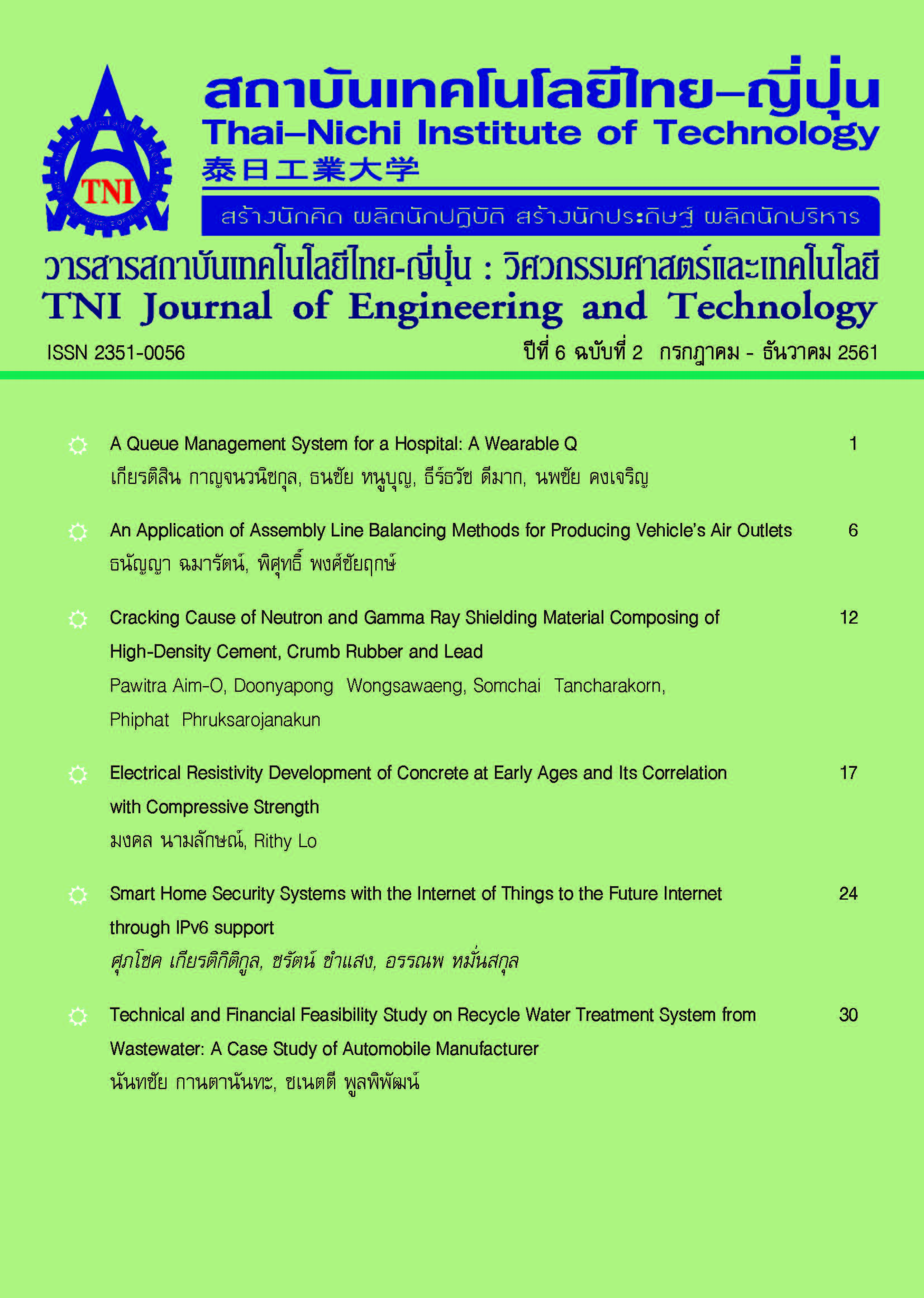Traffic Flow Analytics and Prediction using Nonlinear Autoregressive Network with Exogenous Inputs Technique
Main Article Content
Abstract
This paper proposes the traffic flow analytics and prediction using nonlinear autoregressive network with exogenous inputs technique (NARX). The learning of neural network is divided into 2 configuration parts. The configuration delays are 2 and 4 to compare the results and find optimal configuration value for create NARX model using the simulate data. The chaotic simulate data set are generate by Mackey glass equation. Then analyze data set using NARX model. This able to developed to application or web application used in Bangkok.
Article Details
Article Accepting Policy
The editorial board of Thai-Nichi Institute of Technology is pleased to receive articles from lecturers and experts in the fields of engineering and technology written in Thai or English. The academic work submitted for publication must not be published in any other publication before and must not be under consideration of other journal submissions. Therefore, those interested in participating in the dissemination of work and knowledge can submit their article to the editorial board for further submission to the screening committee to consider publishing in the journal. The articles that can be published include solely research articles. Interested persons can prepare their articles by reviewing recommendations for article authors.
Copyright infringement is solely the responsibility of the author(s) of the article. Articles that have been published must be screened and reviewed for quality from qualified experts approved by the editorial board.
The text that appears within each article published in this research journal is a personal opinion of each author, nothing related to Thai-Nichi Institute of Technology, and other faculty members in the institution in any way. Responsibilities and accuracy for the content of each article are owned by each author. If there is any mistake, each author will be responsible for his/her own article(s).
The editorial board reserves the right not to bring any content, views or comments of articles in the Journal of Thai-Nichi Institute of Technology to publish before receiving permission from the authorized author(s) in writing. The published work is the copyright of the Journal of Thai-Nichi Institute of Technology.
References
[2] J. D. Farmer and J. J. Sidorowich, “Predicting chaotic time series,” Physical review letters, vol. 59, no. 8, pp. 845–848, Aug. 1987.
[3] E. Diaconescu, “The Use of NARX Neural Networks to Predict Chaotic Time Series,” WSEAS Transactions on computer research, vol. 3, no. 3, pp. 182–191, Mar. 2008.
[4] L. Banjanović-Mehmedović, I. Butigan, M. Kantardžić, and S. Kasapović, “Prediction of cooperative platooning maneuvers using NARX neural network,” in 2016 International Conference on Smart Systems and Technologies (SST), 2016, pp. 287–292.
[5] A. Thakur, A. Tiwari, S. Kumar, A. Jain, and J. Singh, “NARX based forecasting of petrol prices,” in 2016 5th International Conference on Reliability, Infocom Technologies and Optimization (Trends and Future Directions) (ICRITO), 2016, pp. 610–614.
[6] L. Zhang et al., “NARX models for predicting power consumption of a horizontal axis wind turbine,” in 2016 UKACC 11th International Conference on Control (CONTROL), 2016, pp. 1–5.
[7] A. G. R. Vaz, B. Elsinga, W. G. J. H. M. van Sark, and M. C. Brito, “An artificial neural network to assess the impact of neighbouring photovoltaic systems in power forecasting in Utrecht, the Netherlands,” Renewable Energy, vol. 85, pp. 631–641, Jan. 2016.
[8] Y. Chunshan and L. Xiaofeng, “Study and application of data mining and NARX neural networks in load forecasting,” in 2015 4th International Conference on Computer Science and Network Technology (ICCSNT), 2015, vol. 01, pp. 360–364.
[9] S.-Y. Yun, S. Namkoong, J.-H. Rho, S.-W. Shin, and J.-U. Choi, “A Performance evaluation of neural network models in traffic volume forecasting,” Mathematical and Computer Modelling, vol. 27, no. 9-11, pp. 293–310, May 1998.


